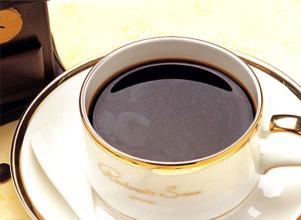Introduction to G2G2G3, the regional treatment method of Yega Xuefei Coffee
Introduction to G2G2G3, the regional treatment method of Yega Xuefei Coffee
Yega Xuefei's coffee trees were planted by monks in Europe and later transferred to farmers or cooperatives. Yega Xuefei is actually constructed by the surrounding coffee communities or cooperatives, including: Hafusha, Hama, Biloya.
These mountain villages are foggy, like spring all year round, with a gentle breeze in summer, cool but not hot, rain but not damp, and no cold damage in winter, giving birth to a unique regional flavor of citrus and flowers. Coffee trees are mostly planted in farmers' backyards or mixed with other crops in the field.
Next, use tall wooden frames or whole scaffolding for the sun to avoid the risk of beans smelling on the ground. In the process of exposure, take good care of the beans so that the coffee beans can be evenly exposed to water; every three to five days, coffee workers will manually screen out defective and moldy beans. Therefore, by the time the exposure is completed, before the beans enter the market to remove the peel and flesh, a bright crimson coffee cherry is already a grade with few defects.
The Red Cherry Project (Operation Cherry Red), led by the Dutch trading company Trabocca BV and partly funded by the Dutch government, has been a small-scale farm quality improvement project since 2005. This project, which enhances coffee production and quality in remote areas of Ethiopia by providing producer expertise and related technology assistance, has been selected since 2005 for small coffee cooperatives at high elevations in Sidamo, Yegashev and Lim. Encourage and assist producers to improve the quality of coffee through testing (professional cup testers are also stationed in coffee producing areas) to ensure the quality of each batch by improving washing, semi-washing, solarization or other experimental treatments as far as they can. Before the harvest season, Trabocca invites selected smallholder organizations / producers to participate in the production of micro-batches of coffee (about 1500 to 3000 kg). Carefully hand-picked 100% ripe red coffee cherries (hence the Red Cherry Project). Local small farmers began growing organic coffee in 2001 and work closely with medium-sized coffee producers because they know how to grow forest coffee in the highlands. It is one of the micro-producing areas with regional characteristics in the Sidamo producing area. The coffee in this region is quite unique, and the coffee produced has often attracted the attention of the market. The original meaning of Ninety Plus's legendary nekisse comes from Nectar from shakisso, and its producing area and name are all from Shaquiso Shakisso.
After obtaining the raw coffee beans, sometimes in order to pursue the perfect taste, the final screening will be done, so this sunny sidamo can reach the highest level of G1.
1. When picking beans, only fully ripe crimson coffee cherries are picked. Before exposure, the beans will be screened for defects in the processing plant to make the beans look average in size and maturity.

Important Notice :
前街咖啡 FrontStreet Coffee has moved to new addredd:
FrontStreet Coffee Address: 315,Donghua East Road,GuangZhou
Tel:020 38364473
- Prev

Introduction to the production area of Manor Manor by Grinding scale treatment of Manning Coffee Bean in Indonesia
Indonesia Mantenin coffee bean grinding scale treatment taste Manor region Manor has always shown its most unique sweetness with the most unique bitterness, like the sweetness of life. No matter how much sugar you put in, you can't hide the bitterness. When you first tasted her, it was amazing. But the charming aroma makes us unable to control our crazy infatuation with her. Her suffering is like the edge of flowers.
- Next

Sumatra Lindong Bean Area Coffee Bean Flavor Description Taste Manor Area Variety Introduction
Sumatra Lindong Bean Area Coffee Bean Flavor Description Taste Manor Producing Area Variety Introduction Generally iron pickup natural hybrid varieties, generally washed. The northernmost part of Sumatra, lake tawar, Tawahu or Acheh or Takengon Kengang, is planted by another friend using traditional shading methods and mainly washed or semi-washed.
Related
- Detailed explanation of Jadeite planting Land in Panamanian Jadeite Manor introduction to the grading system of Jadeite competitive bidding, Red bid, Green bid and Rose Summer
- Story of Coffee planting in Brenka region of Costa Rica Stonehenge Manor anaerobic heavy honey treatment of flavor mouth
- What's on the barrel of Blue Mountain Coffee beans?
- Can American coffee also pull flowers? How to use hot American style to pull out a good-looking pattern?
- Can you make a cold extract with coffee beans? What is the right proportion for cold-extracted coffee formula?
- Indonesian PWN Gold Mandrine Coffee Origin Features Flavor How to Chong? Mandolin coffee is American.
- A brief introduction to the flavor characteristics of Brazilian yellow bourbon coffee beans
- What is the effect of different water quality on the flavor of cold-extracted coffee? What kind of water is best for brewing coffee?
- Why do you think of Rose Summer whenever you mention Panamanian coffee?
- Introduction to the characteristics of authentic blue mountain coffee bean producing areas? What is the CIB Coffee Authority in Jamaica?

